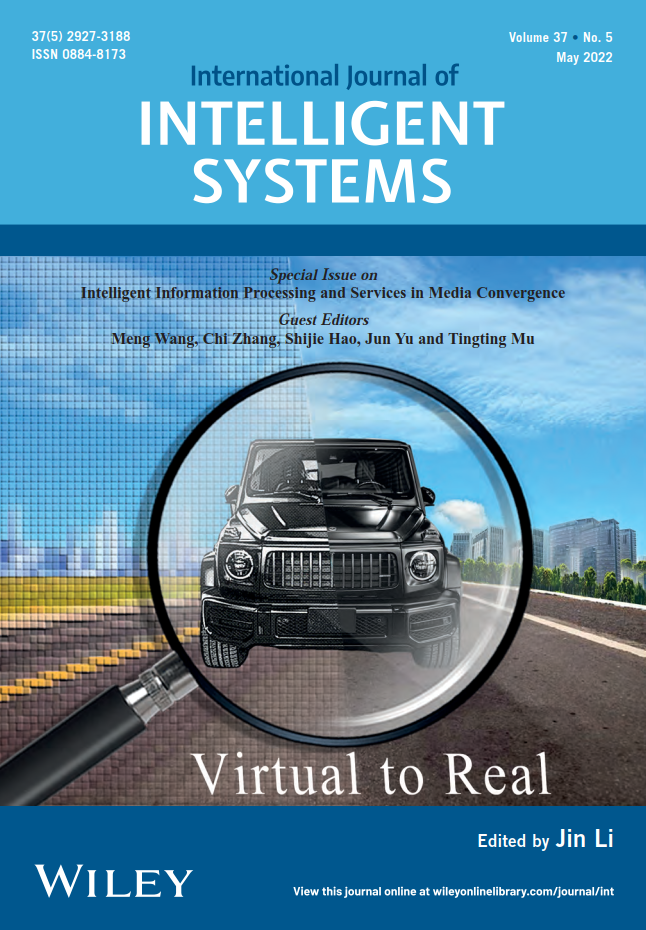新闻
最新成果
-
202311Without tedious and time-consuming labeling processes, virtual datasets have recently shown their superiority for vehicle re-identification (re-ID). Existing virtual to real vehicle re-ID methods employ Read more...
-
202310Unsupervised Domain Adaptive Nighttime Semantic Segmentation (UDA-NSS) aims to adapt a robust model from a labeled daytime domain to an unlabeled nighttime domain. However, current Read more...
-
20238Most existing Low-Light Image Enhancement (LLIE) methods are primarily designed to improve brightness in dark regions, which suffer from severe degradation in nighttime images. However, these methods Read more...
-
20233The goal of re-identification (re-ID) is to find an object ( e.g. , person or vehicle) of interest across cameras. In re-ID, designing suitable and effective loss functions plays an essential and imperative role in Read more...
-
202210Particulate pollution threatens the ecological environment, air quality, and public health. Therefore, it has become an increasing concern for the public and governments in recent decades. In this study, a full coverage Read more...
-
20229Person re-identification (ReID) aims to match pedestrian images across disjoint cameras. Mainstream Re-ID tasks focus on training ReID models once using all the data, which become limited in some real-world scenarios Read more...
-
20228Generalizable person re-identification (re-ID) has attracted growing attention due to its powerful adaptation capability in the unseen data domain. However, existing solutions often neglect either crossing cameras Read more...
-
20226Video person re-identification (re-ID) methods extract richer features from video tracklets than image-based ones and have received growing attention. However, existing supervised methods require numerous Read more...
-
20224Person re-identification (re-ID) is commonly investigated as a ranking problem. However, the performance of existing re-ID models drops dramatically, when they encounter extreme positive-negative class imbalance Read more...
-
20223本文将多层感知机和辐射传输模型相结合,利用可见光和近红外波段反射率信息从卫星影像中识别出云像元. 该方法利用SBDART辐射传输模型,模拟获得了各种复杂陆地地表的反射率值数据集,为多层感知机提供训练样本.Read more...
-
20221Deep learning networks with deeper layers become a trend for their good performance but lacks the potential for real-time mobile deployment. Another challenge for paired training networks is the limited generalization capacity caused by the sample bias. Read more...
-
20221
 Vehicle reidentification (re‐ID) is the task of retrieving the same vehicle across nonoverlapping cameras, which has made significant Read more...
Vehicle reidentification (re‐ID) is the task of retrieving the same vehicle across nonoverlapping cameras, which has made significant Read more... -
202110Pedestrian detection in the night surveillance is a challenging yet not largely explored task. As the success of the detector in the daytime surveillance and the convenient acquisition of all-weather data, we learn knowledge from these data to benefit pedestrian detection in night surveillance.Read more...
-
20218The vertical distribution of fine particles with a diameter < 2.5 μm (PM 2.5 ) plays an important role in understanding the transport of air pollution and in making decisions regarding the prevention and control of regional air pollution. Read more...
-
20217Unsupervised video-based person re-identification (re-ID) methods extract richer features from video tracklets than image-based ones. The state-of-the-art methods utilize clustering to obtain pseudo-labels and train the models iteratively.Read more...
-
20215Annotating a large-scale image dataset is very tedious, yet necessary for training person re-identification (re-ID) models. To alleviate such a problem, we present an active redundancy reduction (ARR) framework via training an effective re-ID model with the least labeling efforts. Read more...
-
20211Low light images captured in a non-uniform illumination environment usually are degraded with the scene depth and the corresponding environment lights. This degradation results in severe object information loss in the degraded image modality, which makes the salient object detection more challenging due to low contrast property and artificial light influence.Read more...

